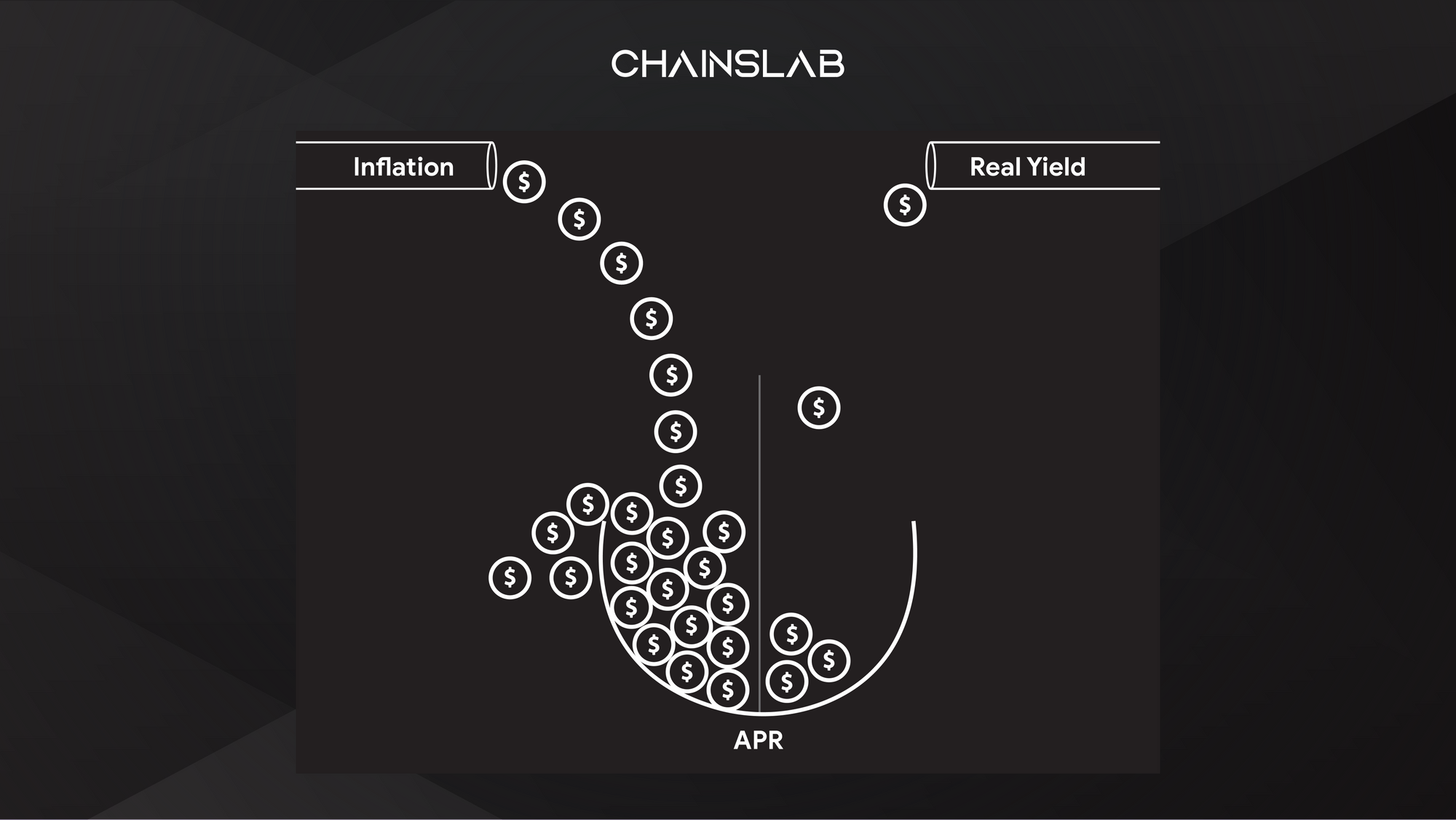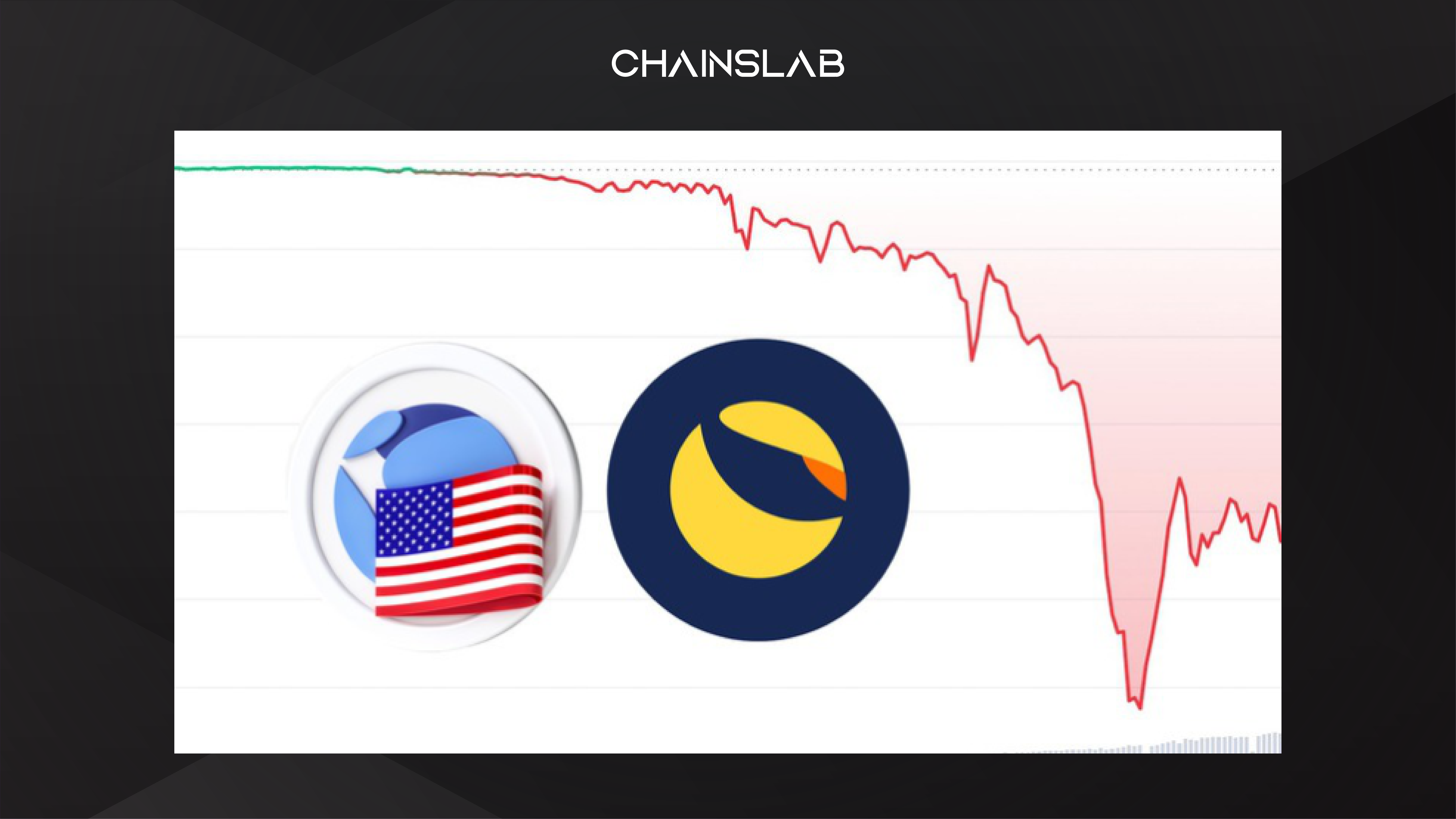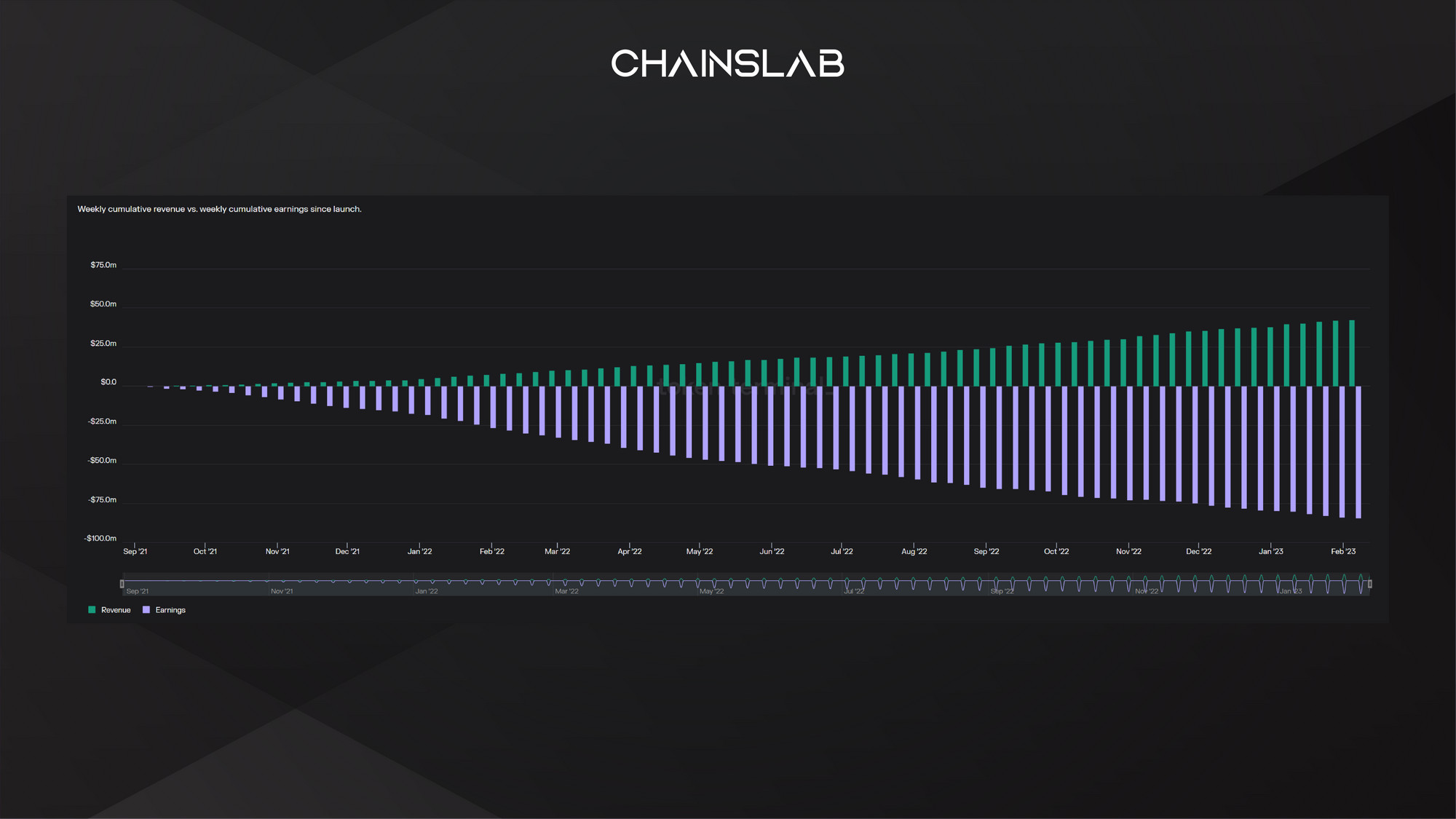I. What is Real Yield?
New narratives and trends are prevalent in crypto. Each cycle is typically characterized by a particular theme that resonates with certain groups of users. DeFi is no different in this aspect. An emerging narrative in recent months is called “Real Yield”. This refers to yields that are generated from tangible sources of revenue and yields that are not solely reliant on inflationary token emissions to provide returns to token holders. Examples of sources of revenue include but are not limited to trading fees, interest fees, staking rewards, and management fees.

The main difference between Real Yield and other trends in DeFi is in the “Real” factor. In the period of rapid DeFi development in the period of 2020 – 2021, many protocols are profitable for users but with a form far different from Real Yield.
This new narrative of real yield differs from what was observed during the height of DeFi summer, when astronomical annual percentage yields (“APYs”) were commonplace, and funded by high token emissions. While the general mantra at that time seemed to be “the higher, the better”, token holders soon came to the realization that the playbook was unsustainable.
Yield-bearing tokens that proclaimed high APYs were generally fueled by an aggressive emission model that distributed the project’s native tokens at an accelerated rate. While an aggressive emission schedule may be helpful for projects to bootstrap user growth in the short-term, there is a constraint to how long projects can do so before inflation seeps in and token prices start declining. In this way, if tokenomics are not carefully managed, declines in token price may offset returns from astronomical APYs, leaving token holders worse off.
The market correction has brought to the forefront the concept of real yield as investors looks for a potentially more sustainable metric to evaluate protocols. While we think this is a welcome development, there is more to it than just using real yield to evaluate protocols. Just to name a few, other factors such as the proportion of revenue-sharing, as well as long-term profitability of the protocol, should be considered. We will explore these later.
II. The Case for Real Yield
From an investment perspective, protocols that are able to provide sustainable, real yields would appear more attractive as compared to protocols that fund token yields via dilutive supply mechanisms. Tokens with high inflationary incentives experience a constant increase in token supply, resulting in an imbalance in supply-demand dynamics over time. Without a corresponding increase in token demand, token prices would fall. As such, there is now increasing focus on protocols that have the ability to generate actual revenue and distribute them in the form of “real yield” (similar to dividend-paying stocks).
However, what is considered attractive to those traders is actually maintained through “fake profits,” namely token emissions. In simpler terms, such projects will require users to mint the protocol’s native tokens and pay rewards with the tokens themselves. Projects operating in this type often have a short lifespan and cause serious collapse consequences. The demise of the Terra ecosystem, followed by TerraUSD and LUNA, is one of the prominent “fake profit” projects.
After that, projects are forced to issue more tokens to increase profits and maintain the ecosystem. This reduces the value of tokens, further causing many investors to stop investing and triggering the “death spiral” of the ecosystem.

Besides that, the market downturn shone the spotlight on the sustainability of business models and growth strategies. Many protocols operated at a loss and bootstrapped growth through the emissions of native tokens to attract liquidity and retain users. While this is similar to the typical playbook employed by many early-stage startups to operate at a loss and prioritize short-term growth, there is a need for protocols to have a viable roadmap to achieve profitability and sustainable growth. This is even more critical during down markets when user activities are low and balance sheets are less healthy.
Overall, yields are relatively more sustainable if they are supported by revenue from protocols rather than inflationary token incentives. The probability of a token death spiral due to mercenary capital flows is also reduced.
III. How Does It Work?
A business model with a steady revenue stream is key for a protocol to provide real yields to token holders. For example, this could be in the form of trading fees from DEXes, or loan interest from lending protocols. Typically, real yield would come in the form of a revenue sharing mechanism where the protocol distributes a portion of fees to stakers. In other words, the yield is backed by real cash flow from the protocol rather than artificial token emissions.
GMX
Using GMX, a decentralized spot and perpetual exchange, as a case study, the protocol receives fees from swaps and leverage trading on the platform. Users can participate in the protocol’s growth as holders of its native tokens - GLP, and GMX. GLP is the protocol’s liquidity provider token and consists of an index of assets used for trading. GMX is the protocol’s utility and governance token.
Every time a transaction occurs on the platform (e.g. opening / closing a position), users pay a fee to the platform. After deducting operational costs, the fees are then split between GLP holders and GMX stakers via a 70% and 30% split respectively. In this way, GMX stakers receive fees that are directly backed by real cash flow from trading activities on the platform. As long as the protocol is able to continue attracting users and facilitate transactions to generate fees, GMX stakers will receive a constant stream of income.
IV. Real Yield is NOT Everything
As author’s point, it might be tempting to start sourcing for protocols that provide real yields. However, beyond just looking at figures, there are several considerations one should think about when evaluating different protocols and their respective tokens.
Real Yield but Mostly Artificial Demand
Real yield is just one part of the equation. While protocols can design tokenomics in such a way that token holders receive real yield, the underlying drivers of revenue may be a result of artificial demand and thus, may not be sustainable. For example, a protocol may look like it is providing real yield when in actual fact, it is also emitting native tokens to incentivize usage of the platform. Investors need to take a step back and evaluate if the protocol will still be able to attract users and rake in protocol revenue if the token incentives were removed. If the answer is no, and if this is not expected to change in the foreseeable future, the protocol may have issues sustaining the “real yield” in the long term.
It goes without saying that there is no free lunch in the world. When a protocol distributes fees to token holders, it is giving up a portion of investable cash flow that could be redirected to research and development of the protocol. Similar to how traditional companies try to strike a balance between the amount allocated to dividend payouts and reinvesting profits, Web3 protocols will need to optimize for the appropriate amount of fees to be distributed.
As such, a protocol that pays out a higher proportion of fees and has a higher yield may not necessarily outperform another protocol with lower fee-sharing agreements in the long-term. This is especially applicable to the crypto market, where change is rapid, and protocols need to adapt and innovate quickly to remain relevant.
Profitability Matter
Additionally, instead of being solely focused on real yield, investors should consider profitability to assess long-term viability of the protocol. Specifically, it does not matter whether a protocol is paying out real yield if it runs at a huge operating loss and is unable to sustain the payout in the long-term. We reiterate that real yield is just one part of the equation to calculate token holder returns.
Profitability of a protocol can generally be derived from subtracting fees paid to supply-side parties (e.g liquidity providers, lenders, etc.) and token emissions, from total revenue.
Profit = Total Revenue - Supply-Side Revenue - Token Emission
As can be seen in the image below, although GMX offers users real yield is extracted from the transaction fee. However, the protocol has yet to generate a profit, largely due to the payment of token incentives on the supply side, which in turn leads to high token emissions and inflation in the end. Basically GMX is unsustainable.

Needless to say, we do not think it is reasonable to demand instant profitability for all protocols given that most protocols are barely a couple of years (or months) old. Referencing traditional early-stage start-ups, operating at a loss in initial phases to bootstrap growth is common and may work out in the long-term. That said, investors should evaluate and determine if there is a viable path to profitability in the foreseeable future.
V. Closing Thoughts
The emergence of real yield as a new narrative has shifted the focus to protocols that are able to pay out yields supported by tangible sources of revenue. This is a welcome development to rethink how to evaluate protocols, and is a stark difference compared to the 2021 playbook of subsidizing high yields with elevated token issuances. The focus on real yield is likely to motivate protocols to be more product-centric, and build platforms with real utility that can compete for a share of users’ wallets.
Nonetheless, as with every new narrative, one should strive to understand not just the strengths of the narrative, but also its limitations. While helpful in raising awareness about sources of yields, real yield does not take into account other factors such as profitability, and sustainability of business models. At the end of the day, it is unlikely a wise choice to make investment decisions based on a single metric alone.
For the market insights on Real Yield protocols in DEFI and other technologies, head over to the Chainslab Twitter to keep yourself always updated.
